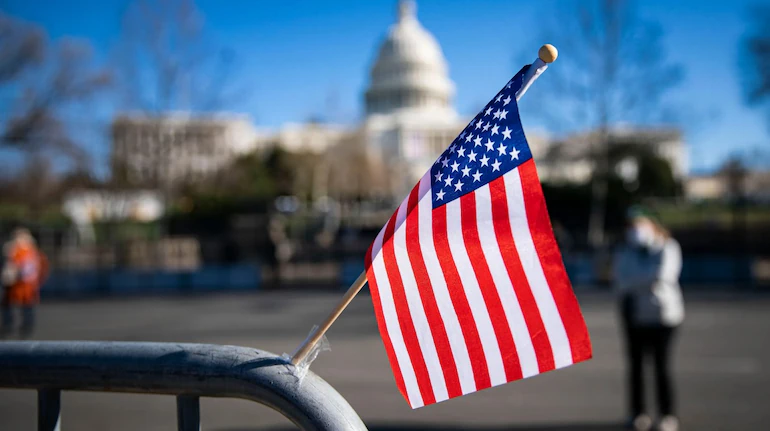On July 12, 2025, the U.S. Embassy in New Delhi issued a new advisory on X (formerly Twitter), warning that “screening does not stop after a visa is issued”—and that any violation can lead to US visa revocation and deportation. This move reinforces the Embassy’s commitment to continuous India US embassy visa screening and signals zero tolerance for non‑compliance.
Interpreting the Embassy’s Warning
The U.S. Embassy’s statement—“screening does not stop after a visa is issued”—serves as a clear reminder that your legal obligations continue through every day of your stay. This advisory reflects several key concerns:
Continuous Risk Monitoring
Consular and DHS systems now share data in real time. Any new arrests, visa‑status violations, or security alerts will trigger an automatic review of your file.
Policy Shifts Under Recent Administrations
Since 2017, U.S. policy has emphasized stricter enforcement. The Department of State has broadened grounds for revocation to include false social media disclosures and minor misrepresentations on DS‑160 forms.
Diplomatic Significance
India is one of America’s top visa‑receiving countries. By issuing this warning, the Embassy aims to deter fraud and protect bilateral trust. It also signals to other diplomatic posts that post‑issuance checks are non‑negotiable.
Practical Impact for Visa Holders
Entry Point Checks: Even with a valid visa, CBP officers at airports can detain and send someone back if an alert exists.
In‑Country Enforcement: DHS can initiate removal proceedings anywhere in the U.S. once a revocation flag appears.
Future Applications: A revoked visa leaves a permanent mark. Any subsequent immigrant or nonimmigrant visa application faces higher scrutiny and potential denial.
Underlying Legal Authority
22 CFR § 41.122 authorizes consular officers to cancel visas when a holder “is ineligible.”
INA 221(i) requires revocation if a visa was “improperly issued,” including cases of fraud or error.
By understanding these dimensions, you see that the warning is more than rhetoric—it’s a binding policy with immediate and long‑term consequences.
India US Embassy Visa Screening Process
The Embassy continually checks visa holders against DHS systems and the Consular Consolidated Database. Officers:
-
Review arrival/departure records
-
Monitor criminal and watchlist databases
-
Verify continued eligibility during visa validity
This ongoing vetting underlines that US visa compliance India is a lifetime commitment.
Deportation Warning
The Embassy’s statement—“we will revoke your visa and deport you if you don’t follow U.S. law”—makes clear the link between US visa revocation and removal proceedings. Once DHS acts on a revocation, Customs and Border Protection can detain and expel the individual, whether at a port of entry or within U.S. territory.
Visa Cancellation Procedures India
When a consular officer orders ongoing visa revocations India, they:
-
Stamp the passport with a cancellation notice
-
Log the action in the CCD under Code 201 (“Cancelled Without Prejudice”) or 212(a) (“Cancelled With Prejudice”)
-
Issue a written notice citing the legal basis (e.g., INA 221(i))
Visa holders must surrender the canceled visa page at the nearest U.S. Embassy or Consulate.
India Visa Overstay Penalties
Even brief overstays carry steep consequences:
-
180–365 days of unlawful presence → 3‑year re‑entry bar
-
Over 365 days → 10‑year re‑entry bar
These India visa overstay penalties begin on your departure date and can trigger US visa revocation upon any future application.
How to Avoid US Visa Revocations
Maintaining your visa status requires ongoing attention. Follow these practical steps to prevent US visa revocation and ensure US visa compliance India:
-
Complete DS‑160 Honestly
-
Disclose all past arrests, charges, and convictions on the DS‑160.
-
List every social media handle used over the last five years. Omitting accounts can trigger visa cancellation.
-
-
File Extensions or Status Changes Early
-
Submit extension (Form I‑539) or change‑of‑status requests at least 45 days before your I‑94 expiration.
-
Late filings risk accruing unlawful presence, which can lead to US visa revocation.
-
-
Obey All U.S. Laws
-
Follow federal laws on taxes, driving, and public behavior.
-
Avoid unauthorized work; secure proper work authorization (e.g., Form I‑765 for employment).
-
-
Report Address Changes Promptly
-
Use USCIS Form AR‑11 to update your U.S. address within ten days of moving.
-
Failure to report can mark you non‑compliant and trigger visa cancellation.
-
-
Keep Documentation Organized
-
Store DS‑160 confirmation, I‑94 records, and extension receipts in one folder.
-
Provide these documents during any DHS or consular review.
-
-
Monitor Your Case Status
-
Check your visa and extension status online via the CEAC portal.
-
Address any requests for additional evidence immediately.
-
These steps help maintain US visa compliance India and prevent how to avoid US visa revocation missteps.
Next Steps After Revocation
If your visa is revoked:
-
Request a consular review of the decision
-
Consult an immigration attorney about relief options
-
Consider filing a 212(d)(3) waiver for non‑immigrant applicants
-
Plan your departure swiftly to minimize penalties
Prompt action can reduce collateral damage and preserve future eligibility.
Maple Crest Immigration Law Firm
Don’t wait until a revocation notice arrives. Contact Maple Crest Immigration Law Firm today for personalized guidance on DS‑160 accuracy, compliance strategies, and waiver applications. Secure your U.S. visa status and travel peace of mind—schedule a consultation at Maple Crest Law.


